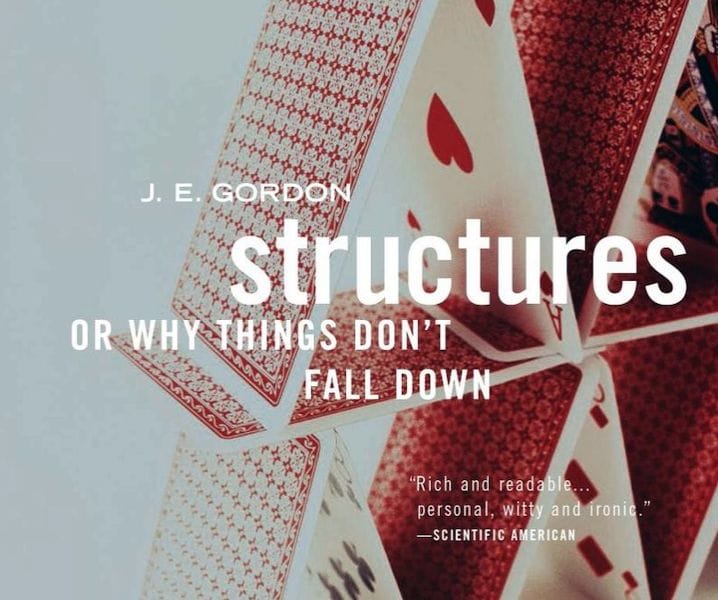![Structures: Or Why Things Don’t Fall Down [Source: Amazon]](https://fabbaloo.com/wp-content/uploads/2020/05/image-asset_img_5eb09c13e576f.jpg)
This week’s selection is “Structures: Or Why Things Don’t Fall Down” by J. E. Gordon.
This 400-page book was first published way back in 1981, although there is a somewhat more recent 2003 edition. It is an introduction to the science of structures and shows, scientifically, how things hold together.
It begins with a survey of “elasticity”, with several chapters covering such topics as stress & strain, load concepts, safety & trust, and fracture mechanics.
Tension studies occupy three chapters, where such elements as pressure vessels, boilers, joints, fasteners, and even soft materials are explored.
Part three investigates compression, where walls, dams, arches, bridges, and beams are investigated. Failure modes are explored, including shear, torsion, and other causes.
Finally, the fourth part of the book discusses design philosophy as it relates to safety issues, financial costs, efficiency and aesthetics aspects. Several appendices include useful formulae for projects and other matters.
The book is noteworthy because it is apparently one of 14 books that inspired ultra-entrepreneur Elon Musk to success, along with other technical and fiction works. If it helped him, it could help you, too.
I’m interested in this book because I have a suspicion many of the readers of this publication are not formally trained in engineering, and thus could benefit from an introduction to these topics. When designing 3D printed parts, particularly those that will make up larger structures, it would be of great benefit to understand exactly what is going on mechanically.
And by doing so, one can adjust the design to have a more functional, reliable and safe project.
Via Amazon











This week’s selection is “3D Printing Projects” by Dorling Kindersley, a.k.a. “DK”.